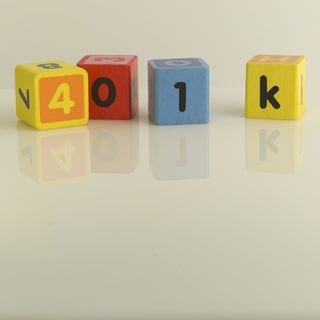 For retirees and people who inherit retirement accounts, there’s only one good thing that comes out of missing an RMD and having to pay a hefty penalty: you won’t make that mistake again!
For retirees and people who inherit retirement accounts, there’s only one good thing that comes out of missing an RMD and having to pay a hefty penalty: you won’t make that mistake again!
Missing a deadline for taking Required Minimum Distributions is an expensive mistake. Not only will you have to pay taxes on the distribution amount, but you’ll get a costly penalty from the IRS. Instead, get familiar with the rules, as described in a recent article from CNBC, “These tips can help retirees make required minimum distributions easy and tax penalty free.”
RMDs or required minimum distributions, are the minimum amount people age 70½ and older must withdraw from their retirement funds. If you’ve inherited a retirement account, you may also have to make a withdrawal. The amount you need to withdraw varies from year to year and is based on specific calculations, including what your account values were as of December 31 the prior year and your age.
The time to get started on your RMD for this year is right now, because the paperwork may take some time. You have until April 1, if you just turned 70½ this year. Let’s look at a few tips:
Get your paperwork organized. In order to know how much you have to withdraw, you must have an accurate picture of what you own. Create a list of accounts and take an inventory first, so you know where all your retirement accounts are located.
Know what you can take from what account. If you have multiple IRAs, you can take your total RMD from any one of those accounts because of the aggregation rule. However, with multiple IRAs, you still must calculate the amount you take out based on the value of all of them. It’s that same with multiple 403(b) retirement accounts. The rule doesn’t apply to 401(k) plans. If you have multiple 401(k) accounts, you must take money from each one, and you can’t take an RMD from an IRA to satisfy a 401(k), or vice versa.
Understand the rules, if you’re still working. If you’re 70½ and still employed, you could get a break from taking your RMD in certain circumstances. Generally, 401(k) plans have a still-working rule, which stipulates that you don’t have to take the RMD until you retire. However, you can only delay the RMDs, if the plan is attached to the company where you’re currently employed. Other accounts from a previous employer are excluded, so you must still take distributions from those.
Keep an eye on any inherited accounts. If you’ve inherited a retirement account, you may have to take an RMD by the end of this year. That generally doesn’t apply if you inherited the money from your spouse, because spouses can do a rollover and keep postponing the distributions. However, if you’re a non-spouse beneficiary, you probably must take a distribution by the end of 2019. If you inherited the account in 2018, you’ll need to take your first RMD in 2019.
RMDs from a Roth IRA will likely be tax-free. However, if you’ve inherited one of these accounts and you didn’t take that money out, you’ll have to pay a 50% penalty on the funds you should’ve withdrawn.
Make your RMD part of your charitable giving plan. You can make a donation directly to a charity and not pay taxes on it. Let’s say your RMD is $5,000 and you give about that much every year to charities. Instead of making a donation to a charity from your personal checking account, have the IRA’s custodian make a donation directly to the charity.
Reference: CNBC (November 29, 2019) “These tips can help retirees make required minimum distributions easy and tax penalty free”
